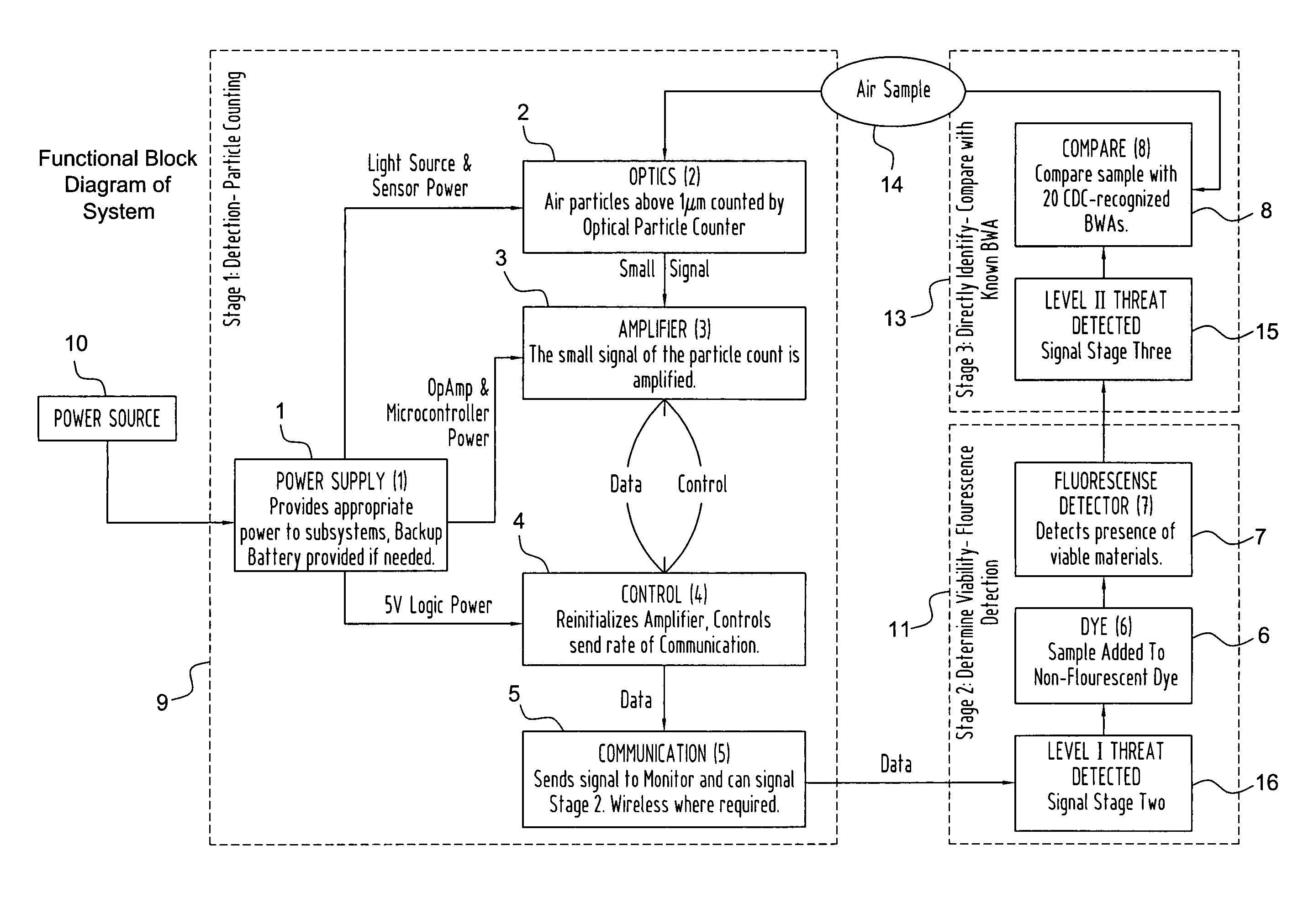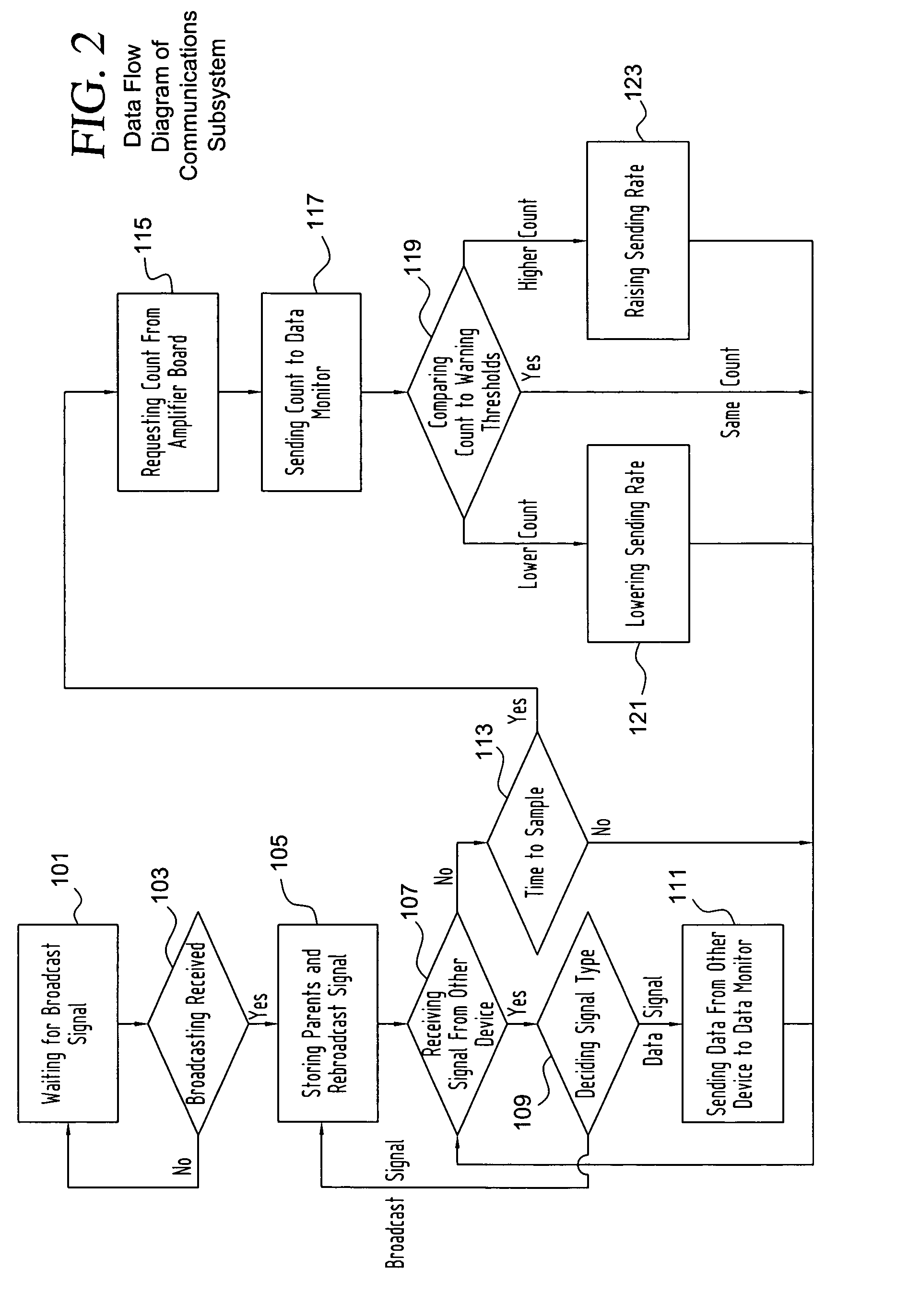Particle counting and DNA uptake system and method for detection, assessment and further analysis of threats due to nebulized biological agents
a biological agent and particle counting technology, applied in the field of detecting and assessing threats due to nebulized biological agents, can solve the problems of insufficient account for the nature of aerosol generation, insufficient threat detection paradigm used by many devices, and essential on-site testing
- Summary
- Abstract
- Description
- Claims
- Application Information
AI Technical Summary
Benefits of technology
Problems solved by technology
Method used
Image
Examples
Embodiment Construction
[0022]The exemplary system block diagram of FIG. 1 shows the apparatus of the present invention. In particular, FIG. 1 presents the various stages / modules of the NABSA system and their interactions. In addition, the NABSA system includes the functions of power supply, amplifier, filtering, DC-cancellation, signal processing of a photometer device, and communications.
[0023]A Particle Counting Module 9 comprising a light scattering photometer capable of classifying particles above one micrometer in size. This classification is done in real time with constant analysis and storage of the results. A Particle Counting Module is able to determine the introduction of a specific narrow size spectrum aerosol at a higher than average particle number concentration and is widely disseminating to alert to the occurrence of a potential threat.
[0024]For a Particle Counting Module 9, the power source 10 is the main line-fed supply (e.g., 120 VAC) used by the OPC. The power supply 1 converts the inpu...
PUM
| Property | Measurement | Unit |
|---|---|---|
| diameter | aaaaa | aaaaa |
| diameter | aaaaa | aaaaa |
| mean particle size | aaaaa | aaaaa |
Abstract
Description
Claims
Application Information
 Login to View More
Login to View More - R&D
- Intellectual Property
- Life Sciences
- Materials
- Tech Scout
- Unparalleled Data Quality
- Higher Quality Content
- 60% Fewer Hallucinations
Browse by: Latest US Patents, China's latest patents, Technical Efficacy Thesaurus, Application Domain, Technology Topic, Popular Technical Reports.
© 2025 PatSnap. All rights reserved.Legal|Privacy policy|Modern Slavery Act Transparency Statement|Sitemap|About US| Contact US: help@patsnap.com



